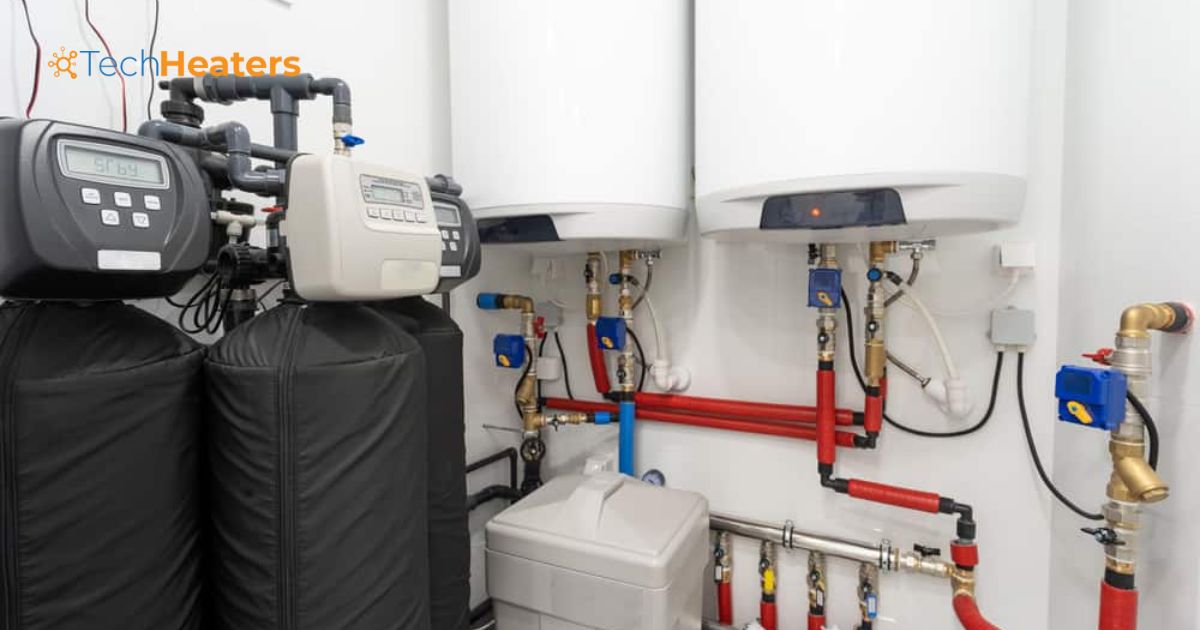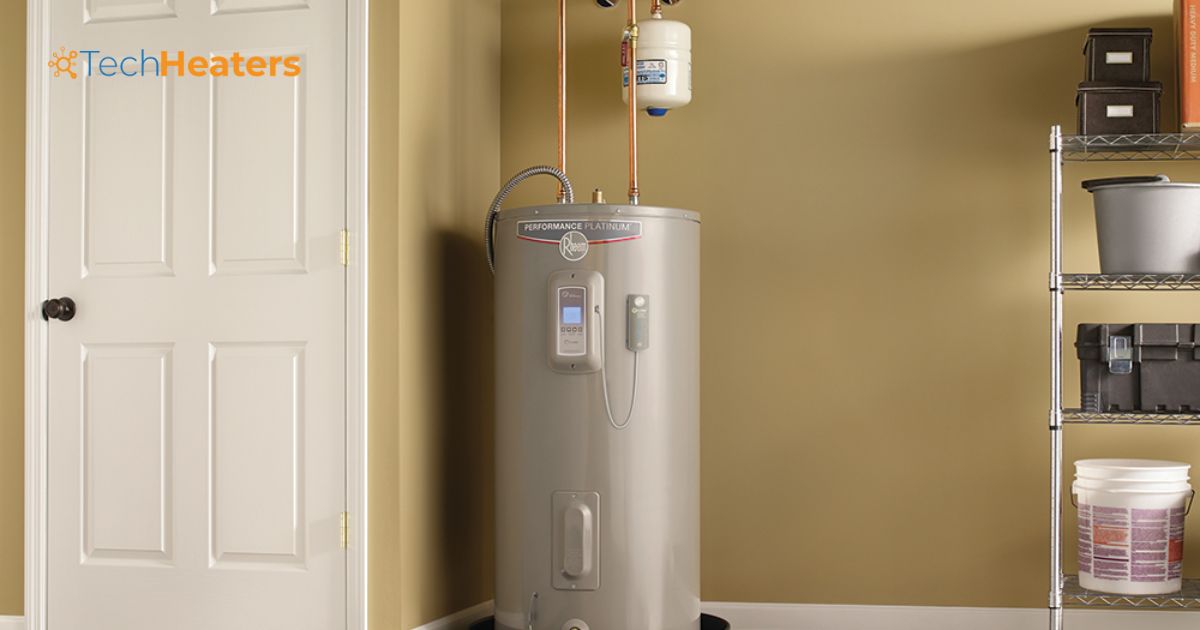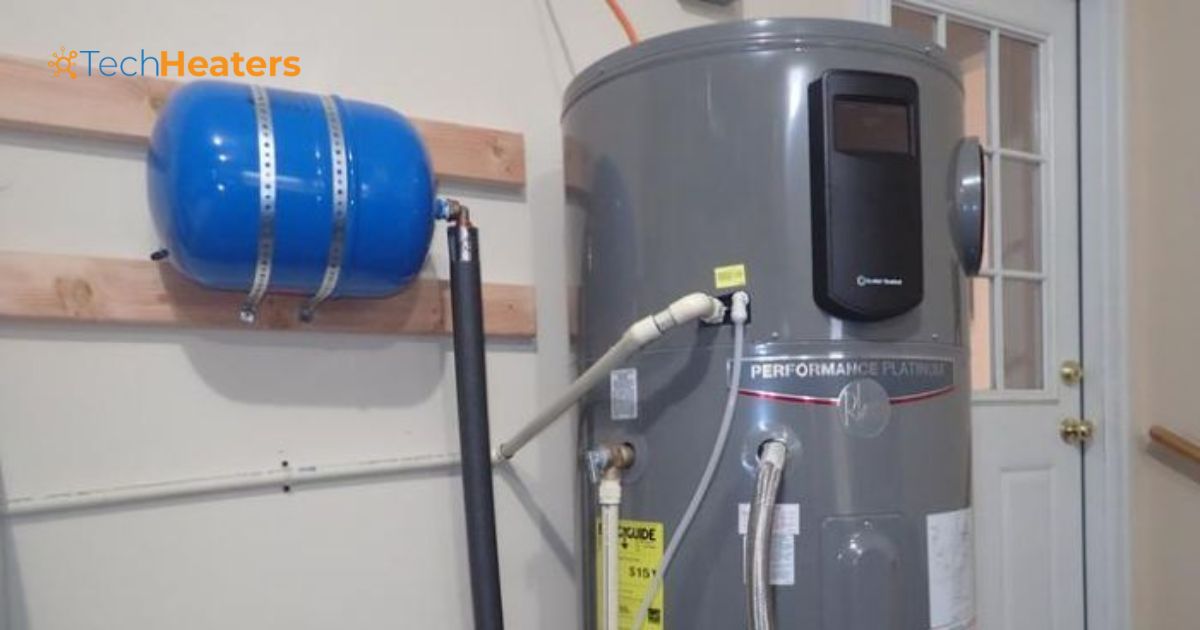A power vent water heater is a type of water heating system that utilizes a powered venting mechanism to expel combustion gases. It is designed to efficiently remove these gases from the heating process, ensuring safe and reliable operation.
Imagine having hot water at your fingertips without compromising safety. Power vent water heaters achieve this by utilizing a mechanical venting system, providing convenience and peace of mind for homeowners seeking an efficient and secure water heating solution.
These innovative water heaters are ideal for homes where traditional venting options are challenging. They use a fan or blower to propel combustion byproducts outside, making them versatile for various installation scenarios. With their advanced venting technology, power vent water heaters offer a practical and efficient way to meet your hot water needs.
The Two Types of Water Heater Vents
Water heaters can have two types of vents: atmospheric vents and power vents. Atmospheric vents use natural convection to expel gases through a vertical chimney. They are cost-effective but require proper ventilation. Power vents use a fan to push gases horizontally through a vent pipe, allowing flexibility in installation. While power vents are more versatile, they may have higher upfront costs. Choosing the right type of vent depends on factors like space, installation requirements, and budget.
Direct Vent Water Heater
A direct vent water heater is a type of heating system commonly used in homes. It operates by drawing air from outside for combustion and expelling combustion gases directly outside. This design enhances safety by preventing the mixing of indoor and combustion air. Direct vent water heaters are efficient and space-saving, as they do not require a traditional chimney for ventilation. They are suitable for various fuel types, including natural gas and propane. Homeowners often choose direct vent water heaters for their reliability, energy efficiency, and ease of installation.
Power Vent Water Heater
A power vent water heater is a type of hot water system that uses a fan or blower to expel combustion gases outside. This design allows for more flexible installation options, as it doesn’t rely on a traditional chimney. The power venting mechanism enhances efficiency by creating a steady draft for combustion. These water heaters are ideal for homes without a chimney or where a direct venting system is necessary. Overall, power vent water heaters provide a reliable and energy-efficient solution for supplying hot water in various residential settings.
Pros and Cons of Power Vent Water Heaters

Power vent water heaters have both advantages and disadvantages. On the positive side, they are energy-efficient, as they use a fan to expel combustion gases, allowing for flexible venting options. These water heaters are suitable for homes without a traditional chimney. However, the installation cost can be higher due to the need for electricity to power the venting fan. Another drawback is that power vent water heaters may require more maintenance, and in case of a power outage, they might not function properly, limiting hot water availability.
Common Power Vent Issues
Common power vent issues can cause disruptions in heating systems. One common problem is a blocked vent, often due to debris or snow accumulation. Inefficient vent motor operation can lead to improper ventilation. Condensation inside the vent can result in corrosion and damage over time. Regular inspection and maintenance are essential to identify and address these issues promptly, ensuring the reliable performance of power vent systems.
Advantages & Disadvantages of Power Vent Water Heaters
Power vent water heaters have both advantages and disadvantages. One advantage is their flexibility in installation, as they can be placed in various locations within a home. Additionally, they offer improved energy efficiency, as the power venting system allows for longer venting distances. However, a drawback is the initial higher cost compared to traditional water heaters. Maintenance can also be more complex, contributing to potential service expenses. Overall, the decision to use a power vent water heater should consider both its benefits and drawbacks for the specific needs of a household.
Choose All Comfort Services for Power Vent Water Heater Repair or Installation
If you need reliable power vent water heater repair or installation, consider choosing All Comfort Services. Their experienced team ensures efficient and prompt service. With a focus on customer satisfaction, All Comfort Services provides top-notch expertise in handling power vent water heaters. Whether it’s a repair job or a new installation, you can trust their skilled technicians. Make the smart choice for your water heater needs and opt for the quality service of All Comfort Services.
5 BENEFITS OF A POWER VENT WATER HEATER

A power vent water heater offers several advantages for homeowners. Firstly, it enhances energy efficiency, ensuring cost savings on utility bills. Additionally, the power vent system allows flexibility in installation, as it can be placed in various locations within a home. The improved ventilation reduces the risk of backdrafting, enhancing safety. Furthermore, these water heaters typically have a longer lifespan, providing a reliable and durable solution for hot water needs. Lastly, the power venting technology contributes to faster water heating, ensuring quick and efficient access to hot water for daily activities.
More Energy Efficiency
More energy efficiency is crucial for reducing environmental impact. Switching to energy-efficient appliances and lighting can lower electricity consumption. Insulating homes effectively helps in conserving energy and reducing utility bills. Using renewable energy sources, such as solar panels, contributes to a cleaner environment. Making small lifestyle changes, like turning off lights when not in use, collectively adds up to significant energy savings.
Eliminate Potential of Backdraft
Eliminating the potential for backdraft is crucial for ensuring the safety of indoor environments. Backdraft occurs when airflow reverses, bringing harmful gases, like carbon monoxide, back into living spaces. Proper ventilation systems help prevent backdraft by maintaining a consistent flow of air. Regular maintenance of heating appliances, such as furnaces and water heaters, is essential to minimize the risk of backdraft. Installing carbon monoxide detectors adds an extra layer of safety, providing early warnings in case of any backdraft-related issues.
Mitigate Risk of Carbon Monoxide Poisoning
Mitigating the risk of carbon monoxide poisoning is crucial for ensuring safety at home. First, installing carbon monoxide detectors in key areas can provide early warnings of any potential leaks. Regular maintenance of gas appliances, such as furnaces and water heaters, helps prevent carbon monoxide emissions. Adequate ventilation in enclosed spaces is also vital to disperse any buildup of this colorless, odorless gas. Educating household members about the dangers of carbon monoxide and emphasizing the importance of prompt action in case of an alarm is essential for a comprehensive approach to safety. More details ” Residential Electric Water Heater ”
FAQ’s
Why would you need a power vent water heater?
You would need a power vent water heater to safely and efficiently expel combustion gases, as it uses a powered venting system to eliminate fumes, making it suitable for installations where natural venting is not possible.
What is a water heater vent?
A water heater vent is a pipe or duct that expels combustion gases, such as carbon monoxide, produced during the heating process, safely outside the building.
Does power vent water heater run continuously?
No, power vent water heaters do not run continuously. They operate intermittently, heating water as needed, and the power vent system helps expel combustion gases safely to the outside during the heating process.
Can you put a power vent on any water heater?
In general, yes, you can install a power vent on many water heaters, but it depends on the specific model and its compatibility with a power vent system.
Conclusion
In conclusion, a power vent water heater is a practical and efficient solution for homes where traditional venting methods may not be feasible. This type of water heater utilizes a powered fan or blower to expel combustion gases, allowing greater flexibility in installation locations. The simplicity of its design makes it a reliable choice for those who need a versatile and space-saving option. The convenience of horizontal venting through an exterior wall eliminates the need for a chimney, making it suitable for a variety of home layouts.
The increased energy efficiency of power vent water heaters contributes to cost savings over time. Homeowners can enjoy the benefits of on-demand hot water without compromising safety or convenience. As technology continues to advance, power vent water heaters represent a user-friendly and effective solution to meet the hot water needs of modern households, offering a reliable and adaptable alternative to traditional venting systems. Choosing a power vent water heater aligns with the growing demand for efficient and flexible home appliances, providing a reliable source of hot water for everyday use.











